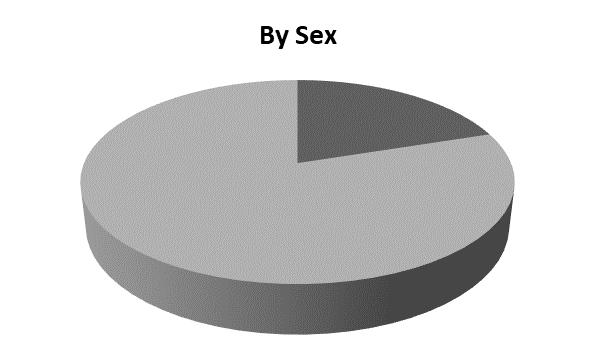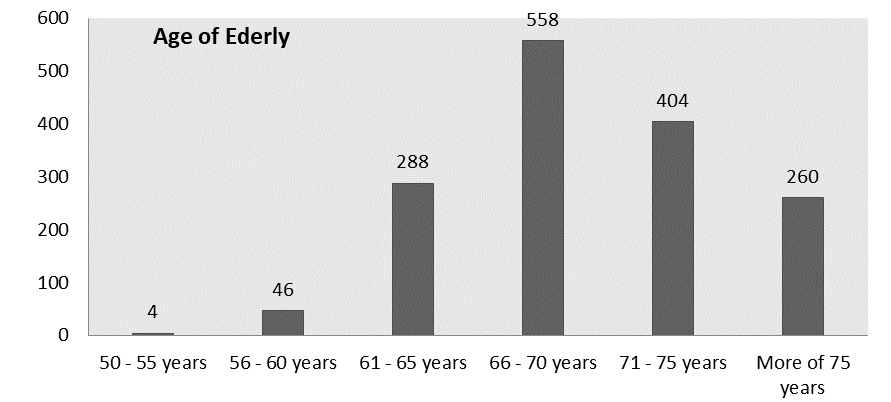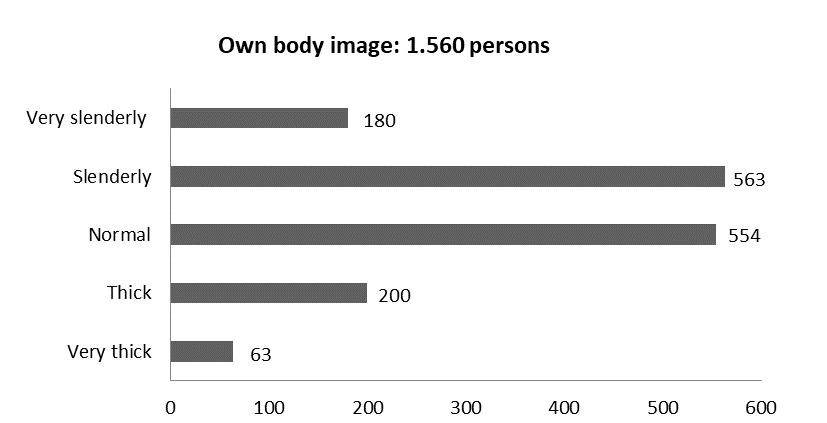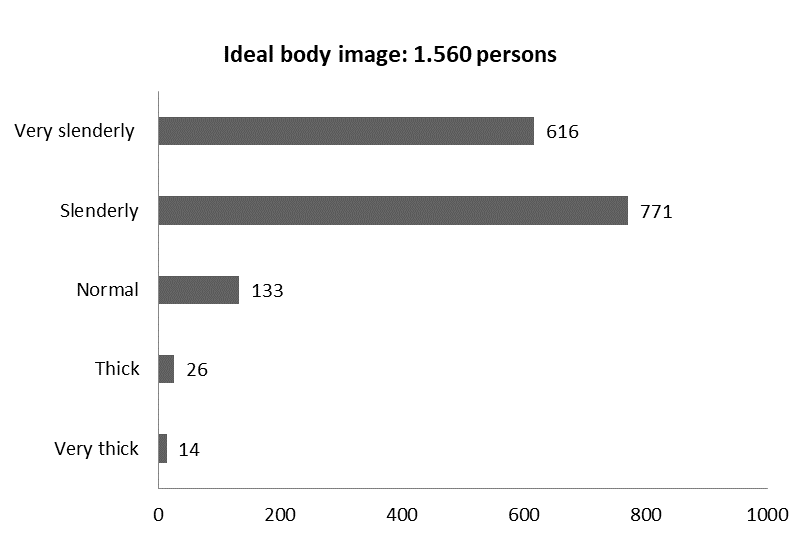Abstract
The practice of daily physical activity and proper nutrition contribute to a healthy aging process for the elderly, which allows them to grow older in good physical and mental state. Aging is a bio-psychosocial process that is part of the vital development of individuals and it is inherent in the human organism. The most citizens: children, adolescents, adults and the elderly get the practice of physical activity or sport to become part of their daily habits and worry about maintaining a healthy and active life, not only with the performance of physical exercise but also with a balanced diet. the society will have managed to overcome a major challenge and, in correlation, will decrease the expenses in health and social services. The concept of Body Index, which we will call onwards (BI), is an important concept in the psychological changes that have been occurring in recent years in old age. The sample of the study consists of a total of 1,560 people belonging to the IMAS (the Murciano Institute of Social Action has in the Region of Murcia). One of the results showed that almost half of the respondents (49.4%) thought that their ideal body image would be that of a thin person, while 39.5% would be that of a very thin person.
Keywords: Adapted physical activitybody image perceptionolder adults
Introduction
The practice of daily physical activity and proper nutrition contribute to a healthy aging process for the elderly, which allows them to grow older in good physical and mental state. Specialists insist on the importance of promoting the benefits of physical exercise and leading an active life. And the sooner you start, the better, since instilling healthy lifestyles as children means a guarantee of health in adulthood. Old age is a social category that tries to conceptualize a stage of human life, a process that we call aging characterized by a series of biological and psychosocial changes. Like any social category, it is a cultural conceptualization and therefore relative (Ruiz Cazorla et al., 2010).
Aging is a bio-psychosocial process that is part of the vital development of individuals and it is inherent in the human organism. Therefore, as a normal process, it must be of the medical domain and to guarantee an effective and timely intervention that allows a healthy aging, where the well-being and the personal satisfaction ensure a good quality of life. There are diseases or factors in the lifestyle that deteriorate their vital and functional capacity. These factors include: smoking, alcohol abuse, lack of exercise, family instability, lack of coping mechanisms, lack of support and lack of resources, aspects that if they are adequately treated guarantee optimal aging. For these reasons, the knowledge of emotional, psychological, social, functional and structural changes will allow the physical educator to assess the influence of these changes on the health of the elderly, creating guidelines and parameters about self-care in the latter stage of the life cycle.
The most important thing that can be said to an old person about how to maintain the body and all its organs and systems in the best possible state, it is to maintain his life in a physically active way. The advantages of a maintained physical activity are multiple and act in different fields. The advantages of being physically active are described in the medical literature for a long time, since they affect the quality of life. The recommendation of having an active life should be positive unless there are obvious contraindications linked to specific pathologies known, cardiac, neurological, respiratory or referred to the osteoarticular system. Even in some of these situations, the reasonably scheduled sports practice can contribute to improving the quality of life of these people, as well as their functional situation.
On the other hand, Fuentes (as cited in Morillo & Oliva, 2015) states in his thesis, after an extensive review of the literature, that gender is a determining variable in the practice of physical exercise and that the female gender practices it less than men at various levels (professional, management or active leisure). The measurement of physical activity (PA), and the factors that influence it, are an important part of efforts that promote health to address physical inactivity. The increase in physical activity is considered as important as anti-smoking, the promotion of healthy habits and diets and the prevention of obesity and avoiding a sedentary lifestyle, in terms of non-communicable diseases (Mather, Jonhson, & De Leonardis, 1999; OMS, 2002). Bearing in mind that in the next forty years the Spanish population will place our country as the second oldest in the world, and that by 2050 30% of Spaniards will be over 65, we should think that we all want to reach old age with good health, with low risk of getting sick and with excellent functional status, both physical and mental; that is, to enjoy a "successful old age".
However, if we add to this a positive attitude towards the aging process itself and an active social involvement and participation, we will achieve active aging (Libro blanco del envejecimiento activo, 2011).
The lack of physical activity has become one of the main problems for public health in European countries, a trend that continues our country as it increases the risk of suffering: overweight, obesity, cardiovascular disease and diabetes. The model of health and healthy aging goes moving towards a model in which physical activity is a philosophy of life complemented by different areas of society. Nowadays, the recommendation of sports practice and the implementation of socio-recreational and sports programs, is being imposed very quickly, due to the substantial change that is taking place in the concept of physical exercise, and also to the support of the scientific community , whose research in different areas (geriatrics and gerontology, sociology, politics, education ...), support this line of investigation (Libro blanco del envejecimiento active, 2011).
When most citizens: children, adolescents, adults and the elderly get the practice of physical activity or sport to become part of their daily habits and worry about maintaining a healthy and active life, not only with the performance of physical exercise but also with a balanced diet, the society will have managed to overcome a major challenge and, in correlation, will decrease the expenses in health and social services. It is necessary that the general population adopt a positive attitude towards those practices that may favor and promote healthy habits: physical exercise, cognitive exercise, nutrition, hygiene, relationship with others, teaching how to love and care for one's body and listening and understand the body, providing the necessary tools for it. “Healthy lifestyle" is the best form of prevention at any age. With regard to this, the three most important action fields are: a) those related to physical activity, b) those that have to do with food, and c) the elimination of toxic habits, especially tobacco. Also the measures we call "hygienic" in its broader context. Wenzel (1982) understands that lifestyle represents the set of behaviors, values and attitudes adopted by the individual in response to their social, cultural and economic environment. Thus, the elements that shape the lifestyle are: a) The practice of physical exercise. b) The type of feeding. c) The ability to modify harmful habits. d) Stress control and life control. e) Attitude towards life.
Thus, we can speak of exercise as another aspect of Health Psychology: because many studies corroborate this (Biddle & Mutrie, 1991; Plante & Rodin, 1990; Willis & Campbell, 1992; Morilla Cabezas, 2001). Likewise, we found studies showing that satisfaction increases as sport practice is more regular or habitual. Weinberg & Gould (1996) think that "people who exercise regularly feel more confident about themselves and what they look like, there is an increase in feelings of self-esteem and self-confidence". The progressive deterioration implied by aging has focused the interest of studies that analyze the attitudes that society has on older people and how they influence the image that the elderly have of themselves (Arrieta & Espinosa, 2005; Shaw, Liang & Krause, 2010; Ulla, et al. 2003). In 2010, the World Recommendations on physical activity for health were published by the OMS, where there is a specific part for the elderly. The concept of Body Index, which we will call onwards (BI), is an important concept in the psychological changes that have been occurring in recent years in old age. The publicity about the corporal beauty has supposed in the older person a need of adaptation to those canons of beauty, and concrete consequences that derive in a greater concern for the aesthetic sense.
Body image is an accumulation of images, fantasies and own meanings about the parts and functions of the body. In this sense, the body is the basis of the body image. (Krueger, 2004). Another statement reported by Schilder, (1999, p.311) that deserves attention is “Dissatisfaction is one of the components of body image that can be linked to numerous psychological problems such as low self-esteem, depression and eating disorders”. Therefore, dissatisfaction with the body itself causes emotional changes in behavior and derogatory attitudes with your body, so it is relevant to evaluate body dissatisfaction among the elderly. One of the most used tools to assess body dissatisfaction is the Scale Silhouette of Gardner & Boice (2004), Gardner, Friedman, & Jackson (1998), state that in recent years, the use of silhouettes to measure shape, size, body weight and dissatisfaction with appearance has increased. However, this increase is related to the public that sees, and limits the number of research studies of the applicability of the silhouette of the scale of the population with visual impairment.
The body image is constituted by three components that are integrated in each individual. (Pruzinski & Cash, 1990): a) Perceptual image. b) Cognitive image. c) Emotional image.
Currently, related research in the area of the BI, focuses mainly on the figure, body weight and the degree of satisfaction with physical appearance. Studies show that approximately 50% of older women show great dissatisfaction with their physical appearance. (Allaz, Bernstein, Rouget, Archinard, & Morabia, 1998; Webster & Tiggeman, 2003). The way in which people perceive their BI has important consequences on their health and their quality of life. A positive BI reinforces a healthy state, an adequate adaptation to changes and reinforces the ability to perform physical exercise and healthy behaviors. While a negative BI is related to psychological disorders. Forman & Davis, (2005) and Jaeger et al. (2001), low self-esteem, Corning, Krumm, & Smitham, (2006), lack of motivation and worse quality of life (Sarabia, 2012). These results highlight the need to study in a more deeply and extensive way the relationships between aging, BI and the degree of satisfaction (Sarabia, 2012).
Through gymnastics, dance and expressive movements, the individual maintains contact with the external world and objects, which favors numerous impressions on your body. These bodily experiences can provide tension or relaxation of the muscles, directly influencing body image. (Schilder, 1999). The concept of self-image, that is, how we see ourselves, changes throughout our life cycle. Body image undergoes modifications over the years that require an adaptation and psychological accommodation before them. (Sarabia, 2012). More recent definitions consider body image as a multidimensional construct that reflects a mental representation of the physical appearance of one's body and includes perceptual, cognitive and affective aspects and influences behavior (Pruzinsky, & Cash, 2002). Studies show that sedentary lifestyle is the seventh risk factor in developed countries. OMS (2002) and Spain is one of the countries with one of the highest indicators of sedentary lifestyles in Europe. It is estimated that more than 70% of the population in developed countries does not perform enough physical activity to maintain health and body weight. For some authors, people who have healthy lifestyles, such as balanced diet and physical activity during childhood, are very likely to keep them in adulthood and keep them in their old age. Physically active seniors have a lower health expenditure than non-active seniors (Ackermann, et al., 2003; Martinson, Crain, Pronk, O’Connor, & Maciosek, 2003; Lee & Buchner, 2008).
Feel good (or feel better). This term refers to the well-being that a person feels during and after exercise. Many people who perform physical activity regularly report that they feel good. Exercise relieves tension, promotes concentration and can produce a sense of optimism and well-being (Folkins & Sime, 1981). The conclusions reached were that the improvement of physical shape as a result of exercise facilitated the appearance of positive emotional states and an increase in self-concept.
Research Methods
Methodology used for the sample
This sample design in the qualitative study has an intentional character, since it seeks to select those groups of people located in strategic positions within the system of relationships linked to the object of study. And it is that what is sought is not the extensive representativeness, but the intensive one, that of gathering information from most of the perspectives of the social structure involved. Therefore, it should not have a representativeness that can be extrapolated to the entire population, but to the field of study. The sampling strategy used for the selection of the subjects is of the non-probabilistic type by quotas, since people with the desired characteristics were chosen to form different groups with a similar proportion of subjects (Salkind, 1999). The present study is carried out with an experimental, transversal and descriptive design.
Description of the population and sample of the study
On the other hand, we know that there are 97,069 elderly people who are associated with the Murciano Institute of Social Action has in the Region of Murcia (IMAS), which represent 23.45% of people over 55 years of age registered in the Region of Murcia (Spain). Of all the people enrolled in the IMAS, only 3,804 people perform some type of physical activity, which represents only 3.92% of the total.
The people surveyed are people associated to the 17 centers that the IMAS and that are also enrolled in some of the sports offered by these centers within their annual program of activities. These activities are of the ten sports offered and cover disciplines as diverse as Gerontogimnasia, Dances, Yoga, Aquafitness, Taichi or Trekking. Up to a total of 69 activities and schedules are offered at these centers in 2015.
The sample of the study consists of a total of 1,560 people belonging to the IMAS Centers in the Region of Murcia. The sex of the sample was 20% men and 80% women.

Findings
Age distribution
The age distribution of the respondents (Figure

Results
To answer the question about the results on the perception of body image of the elderly are distributed as follows, according to (Figure

The Figure

Finally, Table
The questionnaire on healthy habits in elderly people (HASAMA) was designed and validated in six phases, following the indications of (Carretero-Dios & Pérez, 2007).
References
- Ackermann, RT., Cheadle, A., Sandhu, N., Madsen, L., Wagner, EH., & LoGerfo, JP. (2003). Community exercise program use and changes in healthcare costs for older adults. Am J Prev Med; 25:232-7.
- Allaz, A.F. Bernstein, M, Rouget, P., Archinard, M., & Morabia, A. (1998). Body weigth preoccupation in middle-age and ageing women: A General population survey. Intl J. Eating Disorders; 23: 287-98.
- Arrieta, C., & Espinosa, J. (2005). El boom de los abuelitos. Una investigación sobre la imagen que los mayores tienen de sí mismos y de la vejez. Recuperado el 4 de abril de 2009 dehttp://www.enplenitud.com/nota.asp?articuloID=3190.
- Biddle, J. H., & Mutrie, N. (1991). Psychology of Physical Activity and Exercise. London: Springer Verlag.
- Carretero-Dios, H., & Pérez, C. (2007). Normas para el desarrollo y revisión de estudios instrumentales: consideraciones sobre la selección de tests en la investigación psicológica. International Journal of Clinical and Health Psychology, 7(3), 863-882.
- Corning, A.F., Krumm, A.J., & Smitham, L.A. (2006). Differential social comparison processes in women with and without eating disorder symptoms. J Counsel Psychology. 53, 338-49.
- Folkins, C. H., & Sime, W.E. (1981). Entrenamiento de la aptitud física y la salud mental. American Psychologist, Vol 36 (4), 373-389
- Forman, M., & Davis, W.N. (2005). Characteristics of middle-aged women in inpatient treatment, for eating disorders. Int J Eating Disord; 13: 231-43.
- Gardner, R. M., & Boice, R. A (2004). Computer program for measuring body size distortion and body dissatisfaction. Behavior Research Methods, Instruments & Computers, 36 (1), 89-95.
- Gardner, R. M., Friedman, B. N., & Jackson, N. A. (1998). Methodological concerns when using silhouettes to measure body image. Perceptual and motor skills, 86(2), 387-395.
- Jaeger, B., Ruggiero, G.M., Edlund, B., Gómez-Perretta, C., & cols. (2001). Body dissatisfaction and its interrelations with other risk factors for bulimia nervosa in 12 countries. Psychother Psychosom, 71, 54-61.
- Krueger, D. W. (2004). Psychodynamic perspectives on body image. In Cash, T. & Pruzinsky Y. T. (Eds.), Body image: a handbook of theory, research & clinical practice. Nova Iorque: Guilford, Press.
- Lee, I.M., & Buchner, D.M. (2008). La importancia de caminar para la salud pública. Medicina y Ciencia en Deportes y Ejercicio, 40 (Supl 7): S512-8.
- Martinson, B. C., Crain, A. L., Pronk, N. P., O’Connor, P. J., & Maciosek, M. V. (2003). Changes in physical activity and short-term changes in health care charges: a prospective cohort study of older adults. Preventive Medicine,37 (4), 319-326.
- Mather, M., Johnson, MK, & De Leonardis, DM (1999). Estereotipo de confianza en el monitoreo de la fuente: las diferencias de edad y las pruebas neuropsicológicas se correlacionan. Neuropsicología cognitiva , 16 (3-5), 437-458.
- Morilla Cabezas, M. (2001). Beneficios psicológicos de la actividad física y el deporte. Revista Digital, 7 (43).
- Morillo, E.M., & Oliva, P.L (2015). Influencia del ejercicio físico en el auto concepto de las personas mayores desde una perspectiva de género. Actas del VI Congreso Internacional de Mayores, Málaga, con el Título “Longevidad y salud”. Área de Cultura y Deportes de la Diputación de Málaga. ISBN: 978-84-7785-955-0.
- OMS (2002). Informe sobre la salud en el mundo 2002 - Reducir los riesgos y promover una vida sana. Organización Mundial de la Salud.
- Plante, T. G., & Rodin, J. (1990). Physical Fitness and enhanced psychological health. Current Psychology: research and reviews, 9, 3-24.
- Pruzinsky, T., & Cash, T.F. (1990). Integrative themes in body-image development, deviance, and change. En: Cash, T.F., Pruzinsky, T. (eds.). Body Images: Development, deviance and change. New York: The Guilford Press, 337-49.
- Pruzinsky, T., & Cash, T. F. (2002). Understanding body images: Historical and contemporary perspectives. Body image: A handbook of theory, research, and clinical practice, 3-12.
- Salkind, N. J. (1999). Métodos de investigación. Pearson Educación.
- Sarabia, C.M. (2012). La imagen corporal en los ancianos. Estudio Descriptivo. Gerokomos 2012, 23 (1), 15-18.
- Schilder, P. (1999). A imagem do corpo: as energias construtivas da psique. 3. ed. São Paulo: Martins Fontes.
- Shaw, B.A., Liang, J., & Krause, N. (2010). Age and Race Differences in the Trajectories of Self-Esteem, Psychology and Aging, 25, 82-94.
- Ulla, S., Coca, C., Rincón, C., Díaz, J.L., Remor, E., Arranz, P., & Bayés, R. (2003). Coping with Death: Perceptions of health care professionals working in a pediatric intensive care unit and a geriatric service. Illnes, Crises & Loss, 12. DOI:
- Webster, J., & Tiggemann M. (2003). The relationship between women’s body satisfaction and self-image across the life span: The role of cognitive control. J Genetic Psychol; 164, 241-52.
- Weinberg, R., & Gould, D. (1996). Fundamentos de psicología del deporte y el ejercicio físico. Barcelona: Ariel Psicología.
- Wenzel, E. (1982). Perspectives of the WHO Regional Ofice for Europe. Health Promotion and Lifestyles. Hygie.
- Willis, J.D., & Campbell, L.F. (1992). Exercicse Psychology. Champaign: Human Kinetic.
Copyright information

This work is licensed under a Creative Commons Attribution-NonCommercial-NoDerivatives 4.0 International License.
About this article
Publication Date
09 April 2019
Article Doi
eBook ISBN
978-1-80296-059-4
Publisher
Future Academy
Volume
60
Print ISBN (optional)
-
Edition Number
1st Edition
Pages
1-1062
Subjects
Multicultural education, education, personal health, public health, social discrimination,social inequality
Cite this article as:
Pérez, R. J. I., & Moreno, A. M. (2019). Body Image In Subjects Who Practice Physical Activity In Centers Of Elderly. In E. Soriano, C. Sleeter, M. Antonia Casanova, R. M. Zapata, & V. C. Cala (Eds.), The Value of Education and Health for a Global, Transcultural World, vol 60. European Proceedings of Social and Behavioural Sciences (pp. 677-685). Future Academy. https://doi.org/10.15405/epsbs.2019.04.02.84

